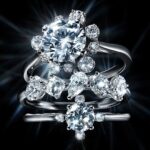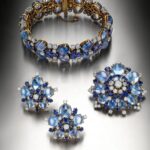Recently, celebrities have updated their New Chinese Style for spring and summer, with various jade and jadeite jewelry making complementary appearances. It’s clear that jade suits Chinese people perfectly, and the style has long since moved beyond the “grandmother’s style”.
However, to be honest, apart from traditional bracelets, women have somewhat limited choices. Some have started looking at how Western jewelry brands interpret jade jewelry, and upon inspection, the difference in styles is quite significant. So, how would you choose?
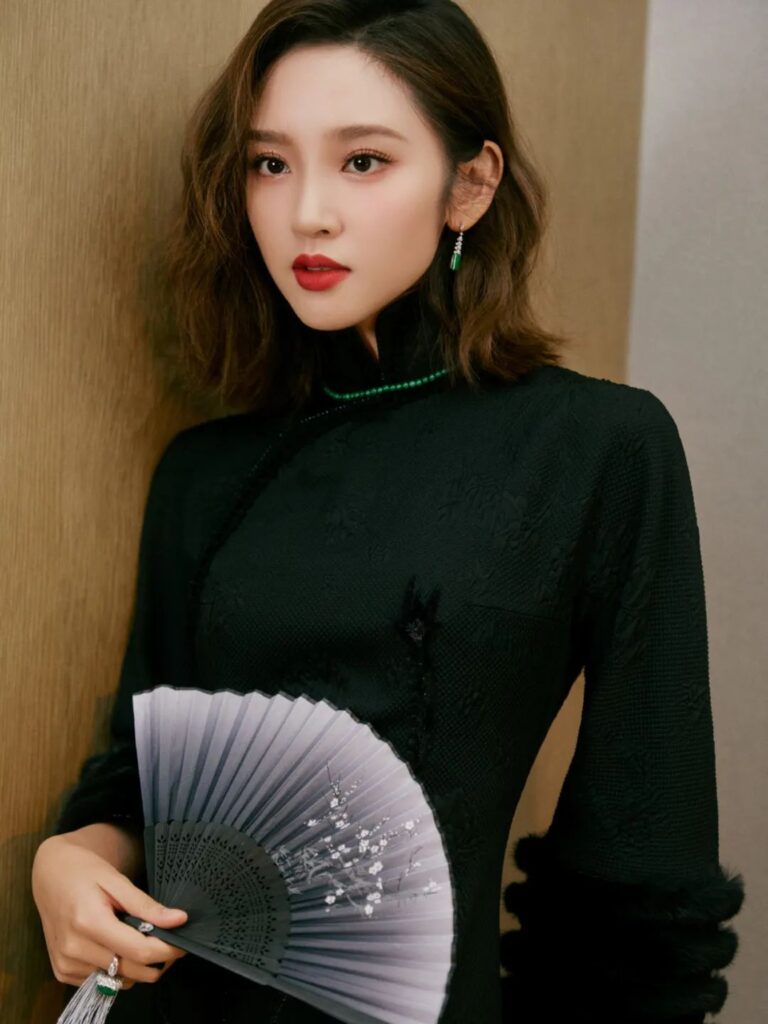
Among celebrities today, many are embracing the New Chinese Style, with the most common jewelry pairing being jade bangles. Their first choice is often high-quality jadeite bracelets.
But have you noticed that Westerners rarely wear jadeite bangles? Even though there are collectors like Barbara Hutton and Heidi Horten who love exceptional jadeite, they didn’t collect jadeite bracelets. Why don’t Westerners love jade bangles? After all, this is the “top-tier” style of our ancestral jade jewelry.

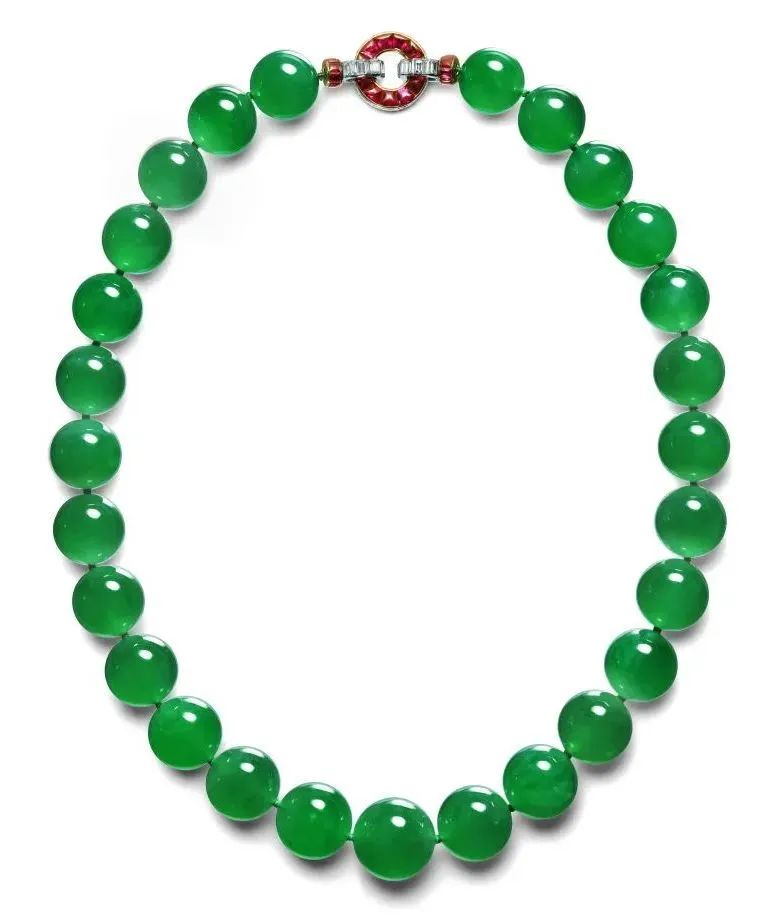
Hutton Mdivani Necklace, circa 1933
Natural jadeite beads, rubies, diamonds
April 2014, Sotheby’s Hong Kong
Estimate: 100,000,000–150,000,000 HKD
Sold for: 214,040,000 HKD
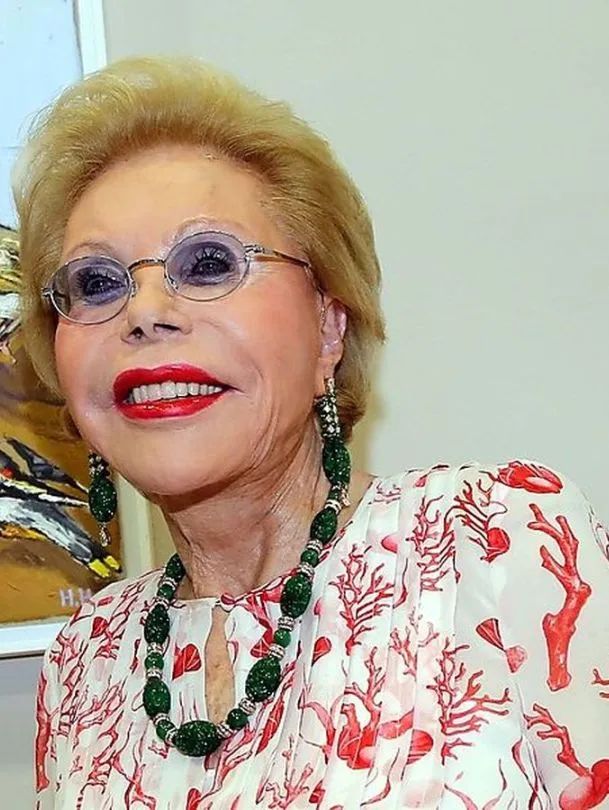
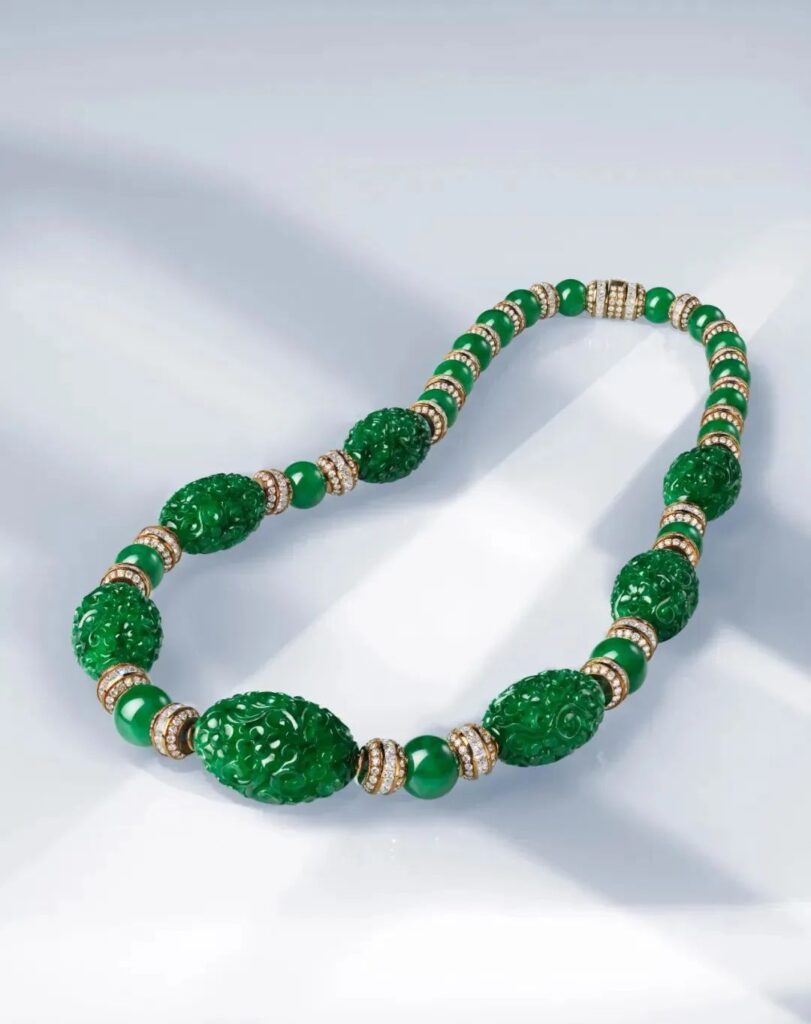
The World of Heidi Horten Special Auction
March 2023, Christie’s New York
Estimate: 100,000 – 150,000 USD
Indeed, Chinese love for jade has a long history. Since the beginning of human civilization, jade has been the primary choice of jewelry material for Chinese people. If we were to choose a gemstone that best represents the “national style”, jade would undoubtedly rank first.
We appreciate jade’s beauty in its material, which is why jade bangles have been popular for the longest time and are the easiest to match. Their shape can maximally showcase the color, luster, texture, and transparency of jade, which is why they have been highly sought after for thousands of years.
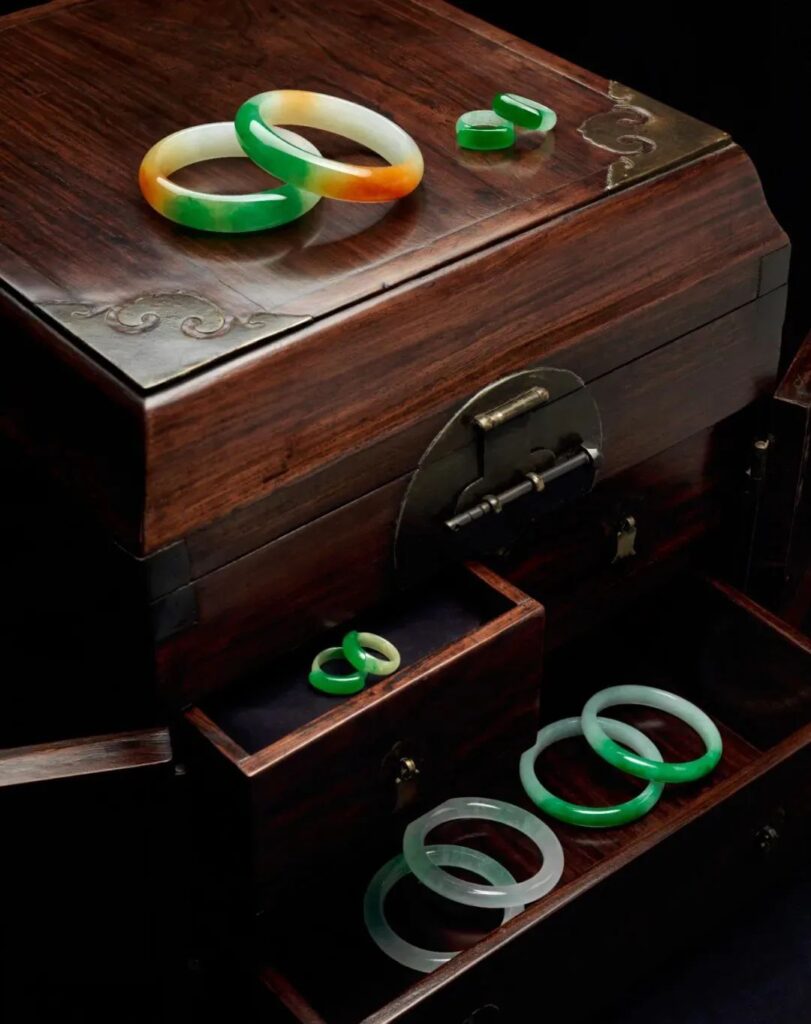
Westerners, on the other hand, started applying jade in jewelry much later, around the early 20th century during the Art Deco trend. Jade, as a representative of Chinese style, entered Western jewelry design, emphasizing the mysterious charm of an ancient Eastern country.
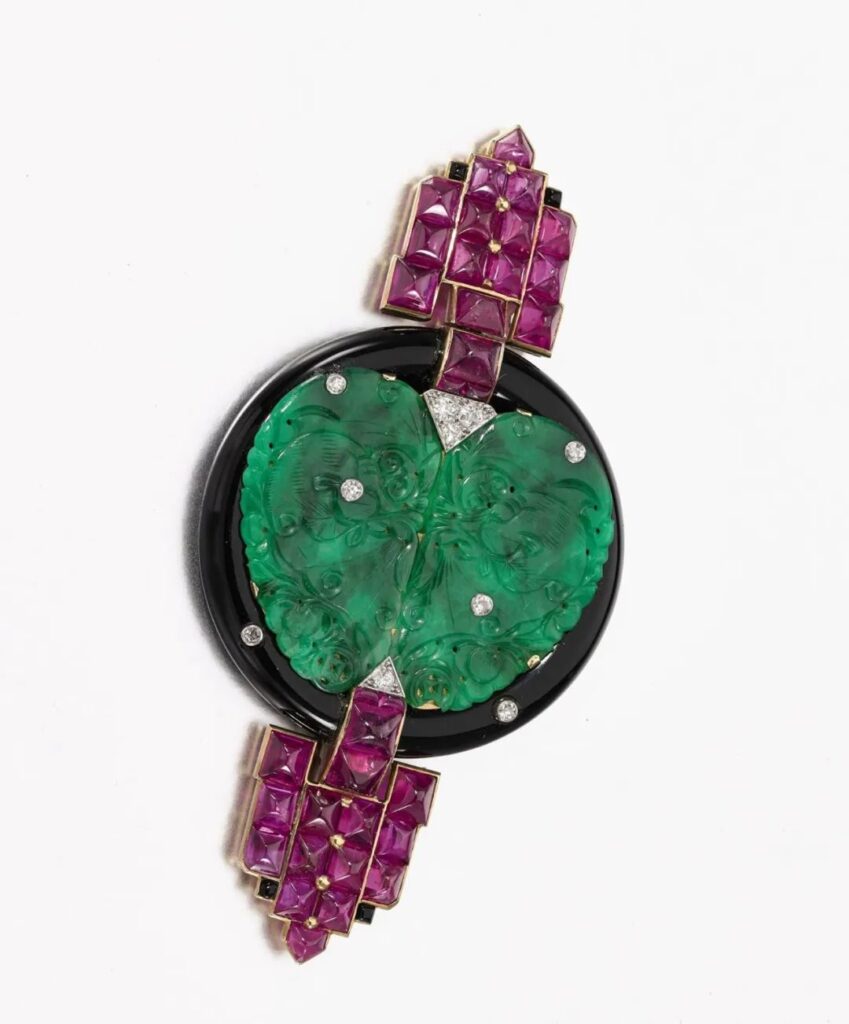
Carved jadeite, rubies, diamonds
Circa 1925
Although big brands like Cartier have launched exceptional jadeite bead necklace designs, overall, jade, a gemstone without fire that doesn’t radiate brilliant light, hasn’t truly entered the Western jewelry circle. Today, while many designers produce excellent designs, they focus more on style design rather than the material beauty of jade itself, which Chinese people appreciate.
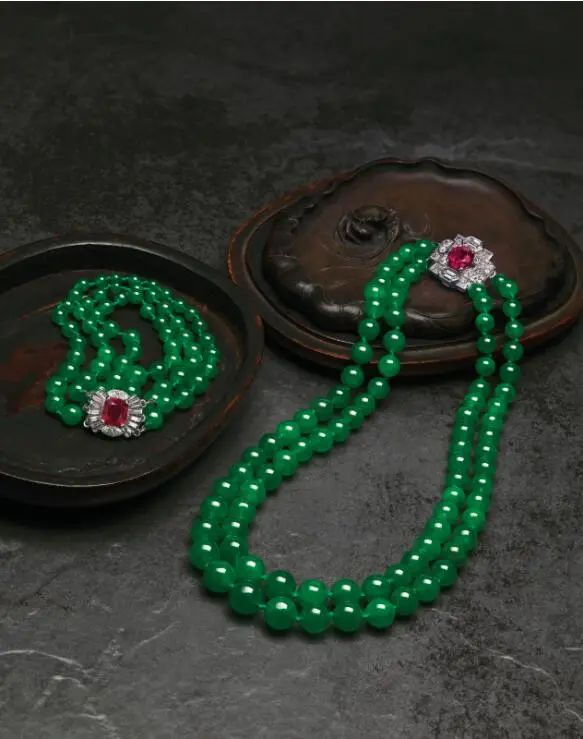
This is why you rarely see jade bangles favored by Chinese in Western designers’ works. Why? Because Chinese appreciate the jade itself in jade bangles. For jadeite bangles, the focus is on type, water, base, color, and craftsmanship.
For Hetian jade bangles, the emphasis is on oiliness, density, color, purity, and carving. The key point is that these bangles are meticulously carved from a single piece of jade, and their integrity itself proves their rarity.
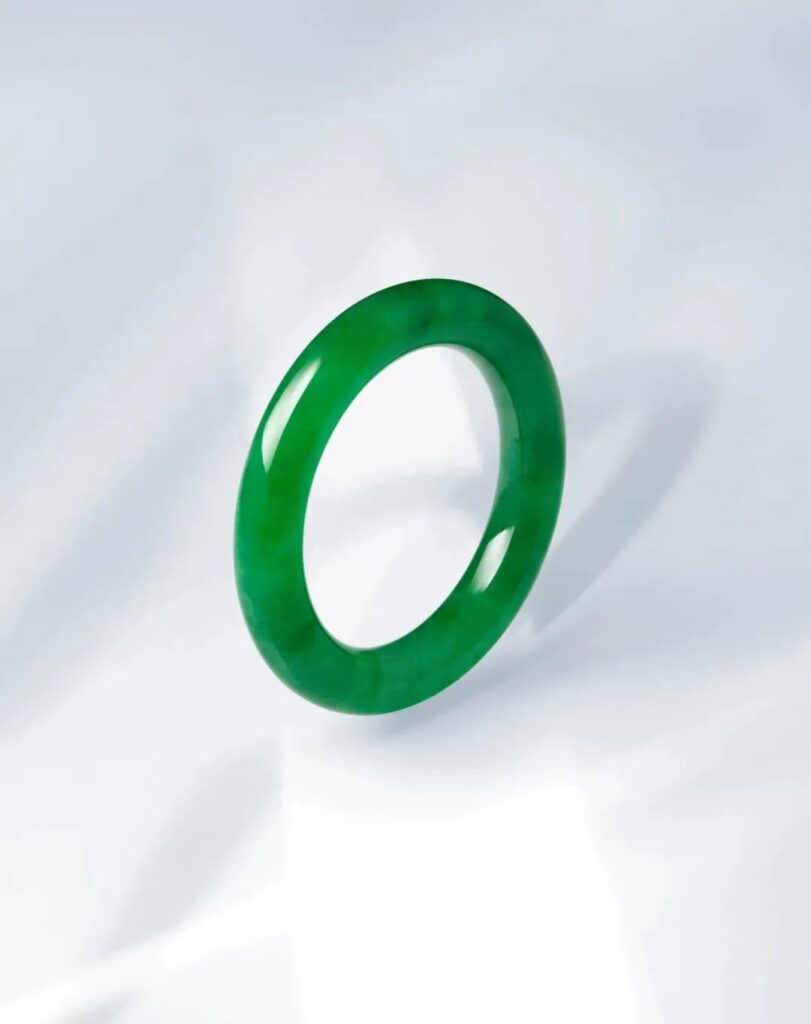
Inner diameter 56.8 mm, width 12.5 mm, thickness 12.5 mm
April 2023, Christie’s Hong Kong
Estimate: 22,000,000-35,000,000 HKD
Jadeite bangles, in particular, are often leading auction items. Because most jadeite rough stones lack fine texture or are full of cracks and impurities, truly top-grade rough stones are extremely rare.
The difficulty in making an excellent jadeite bangle lies in the need for a whole, crack-free, fully green rough stone. Since the internal color of the rough stone cannot be determined before cutting begins, obtaining an exceptional jadeite bangle requires considerable luck, naturally qualifying it as a “family heirloom” for collectors.
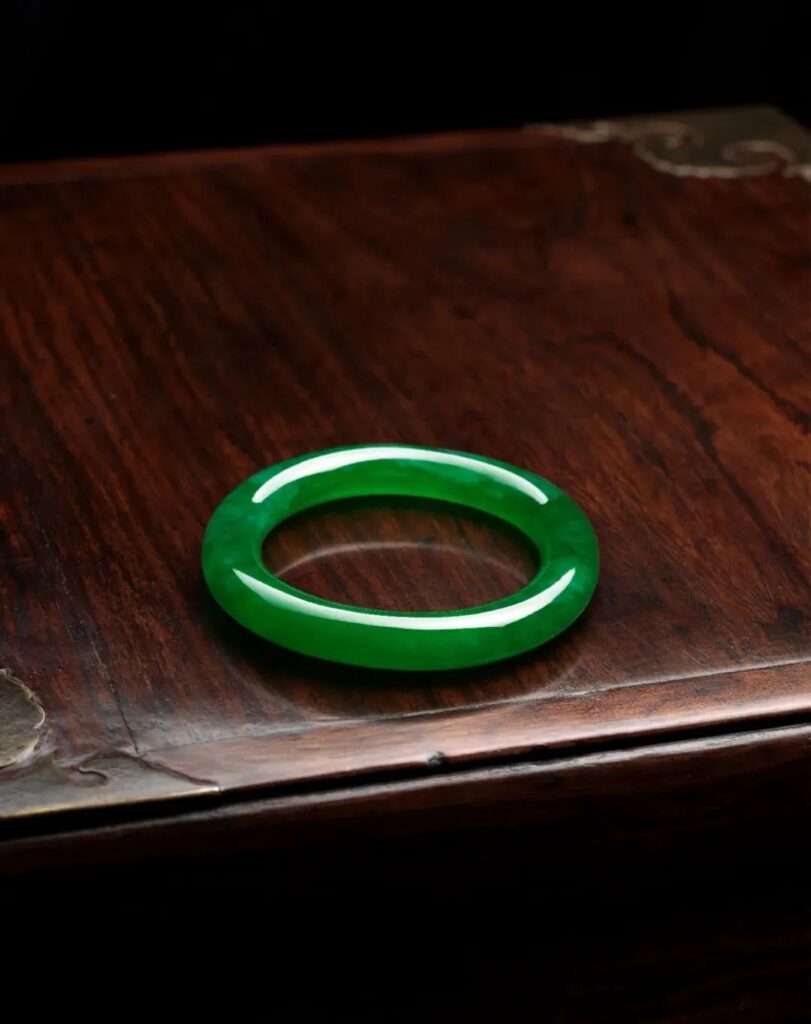
November 2022, Christie’s Hong Kong
Estimate: 25,000,000 – 35,000,000 HKD
Moreover, jade bangles themselves represent the auspicious meaning of “perfection”. They are usually given as blessings by mothers or mothers-in-law when women get married.
However, for Westerners, these complete bangles are very inconvenient to wear. If you carefully review Western jewelry history, their earliest wrist decorations were bracelets, followed by bangles, but their bangles were never a complete circle. Most designs could be opened, or were simply designed as open bangles.
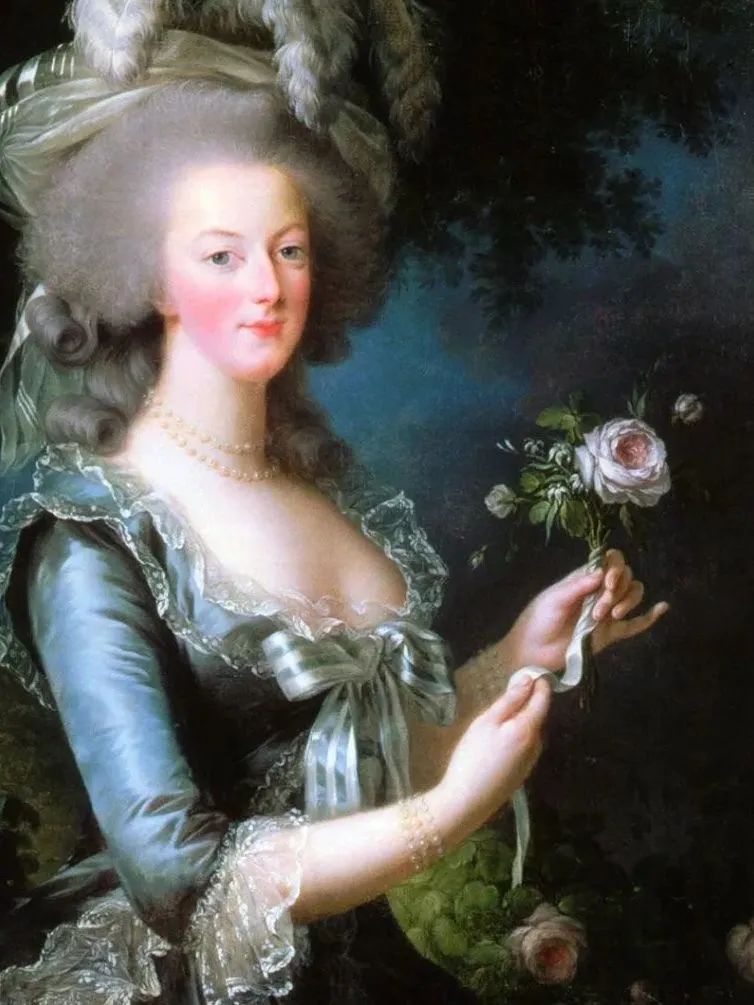
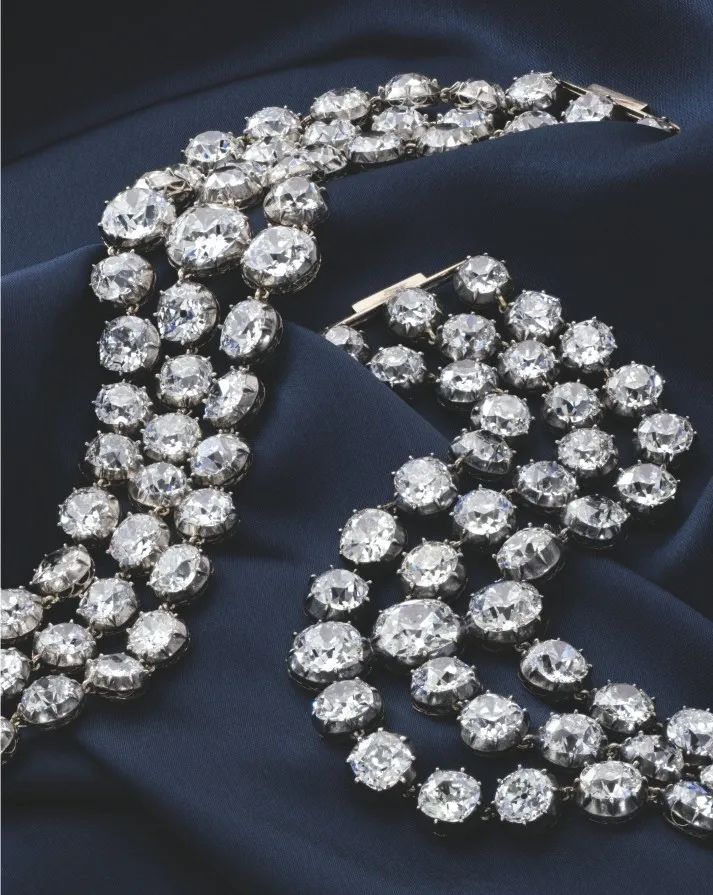
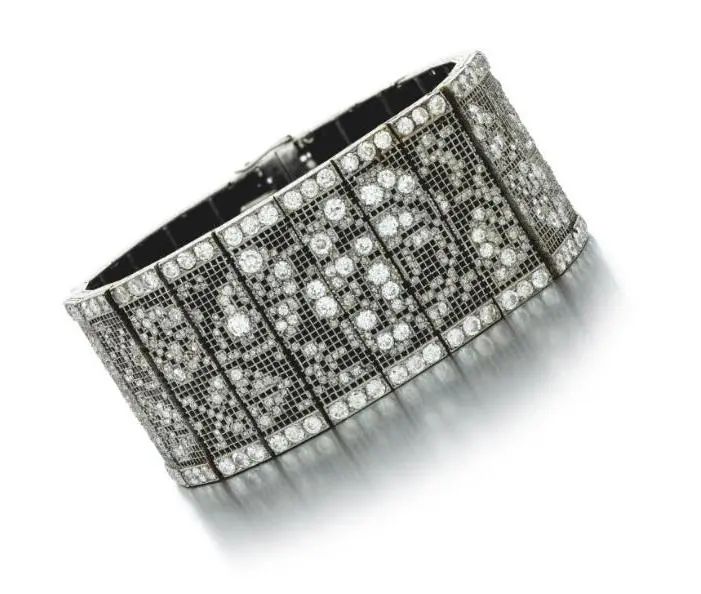
1915
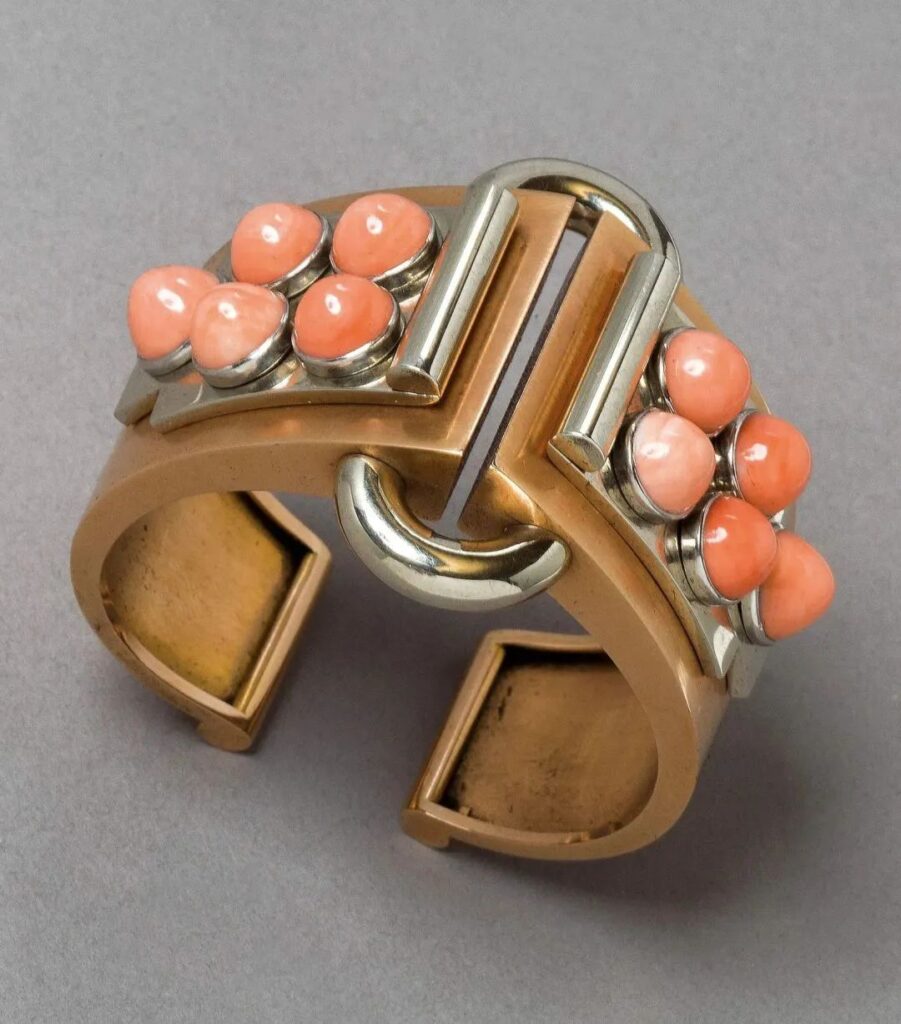
1937
Therefore, Western designers’ jade bracelets or bangles are always in a broken state for easy wearing. You absolutely don’t need to find a suitable circle size, because they don’t have the concept of wearing a jade bangle for life without taking it off. They will carve and inlay small-sized jade into bracelets, or carve jade into open bangles.


Carved jade, rubies, diamonds
Even if it looks like a jade bangle, designers focus on more decorations. For example, this set of Hetian jade bangles by David Webb is wrapped in gold and inlaid with pearls and enamel. But please note that his bangles are not complete circles, but are designed to be cut and opened.
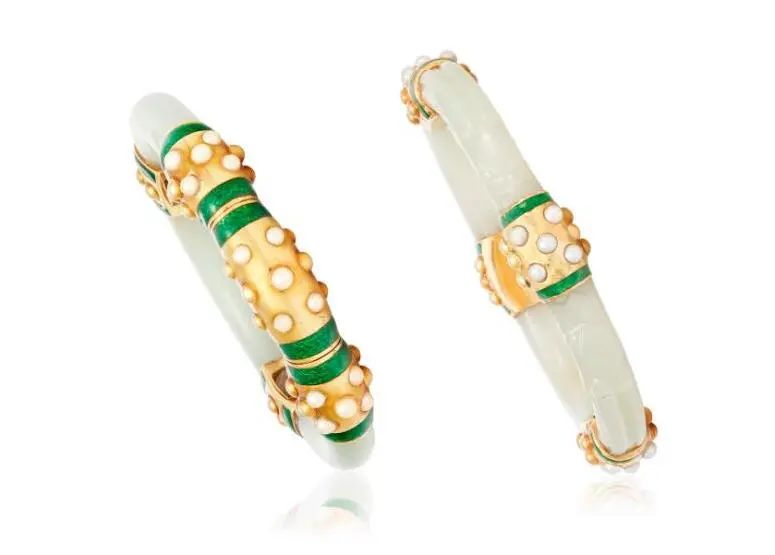
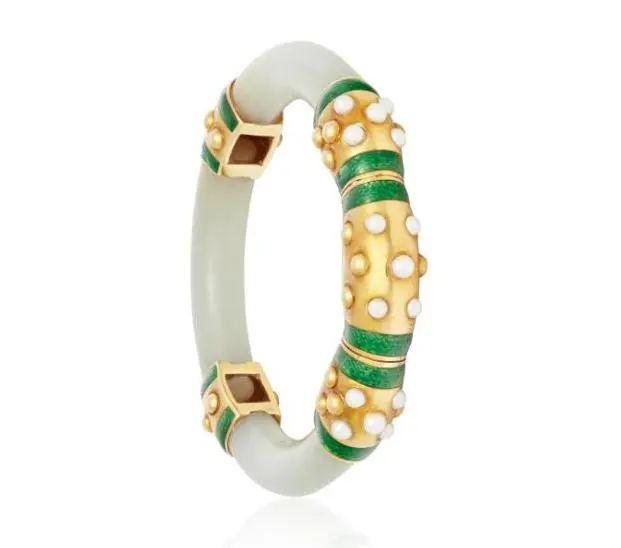
Some modern Western jewelry brands have continued this concept of bangles that must open. For example, Gumps, an American brand specializing in jade jewelry, makes jade bangles in a modernist style, directly cutting them and combining two colors of jade into one bangle that can be opened for wearing.
Although for Chinese people, this gold-mounted jade method is only a repair measure taken when a bangle unfortunately breaks, you can’t deny that it’s very modern, more convenient to wear, and more suitable for ladies who need to change their outfits daily.
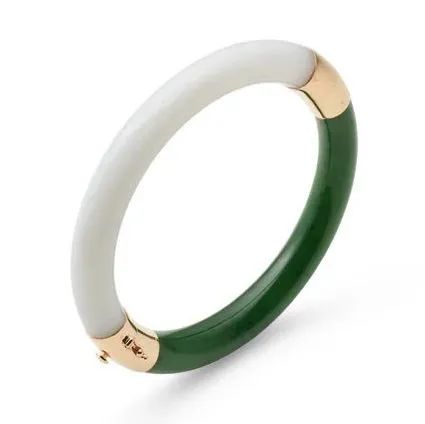
Moreover, you can see that the jade material chosen by Gumps is not what we Chinese consider high-quality jade. When we buy jadeite, we try to avoid black mineral inclusions, considering pure green without black spots as the best. But Westerners might think these natural black spots are a kind of primitive beauty, using them in jewelry without hesitation.

So if you’re buying jade jewelry from an investment and collection perspective, you should definitely choose Chinese jewelry designs, especially top-grade jadeite, which undoubtedly has more value preservation potential.

However, for young ladies currently following the New Chinese Style trend, it might be worth broadening your scope. Hetian jade bangles are also an excellent choice.
After all, when jadeite entered China in the late Ming and early Qing dynasties, it was mainly used for carving utensils. It was Empress Dowager Cixi who really popularized it. Due to her preference for bright colors, the “green” of jadeite and the “pink” of tourmaline became her favorites, and thus, jadeite became the “top trend” in Chinese jewelry.
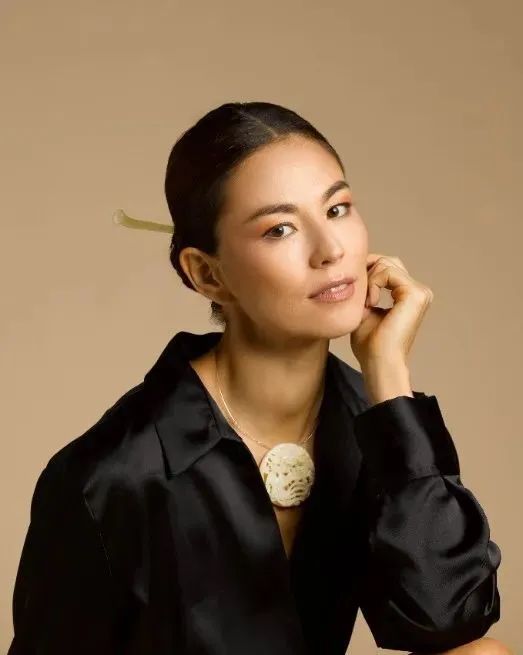
The jade truly loved by the ancients was more often soft jade, such as Hetian jade from “Kunshan” and Lantian jade described in the phrase “Lantian warms in the sun, jade emits smoke”. These smooth and delicate jades, ranging from white to green in soft tones, better fit the literati’s association of “a gentle and humble gentleman, as warm and smooth as jade”.
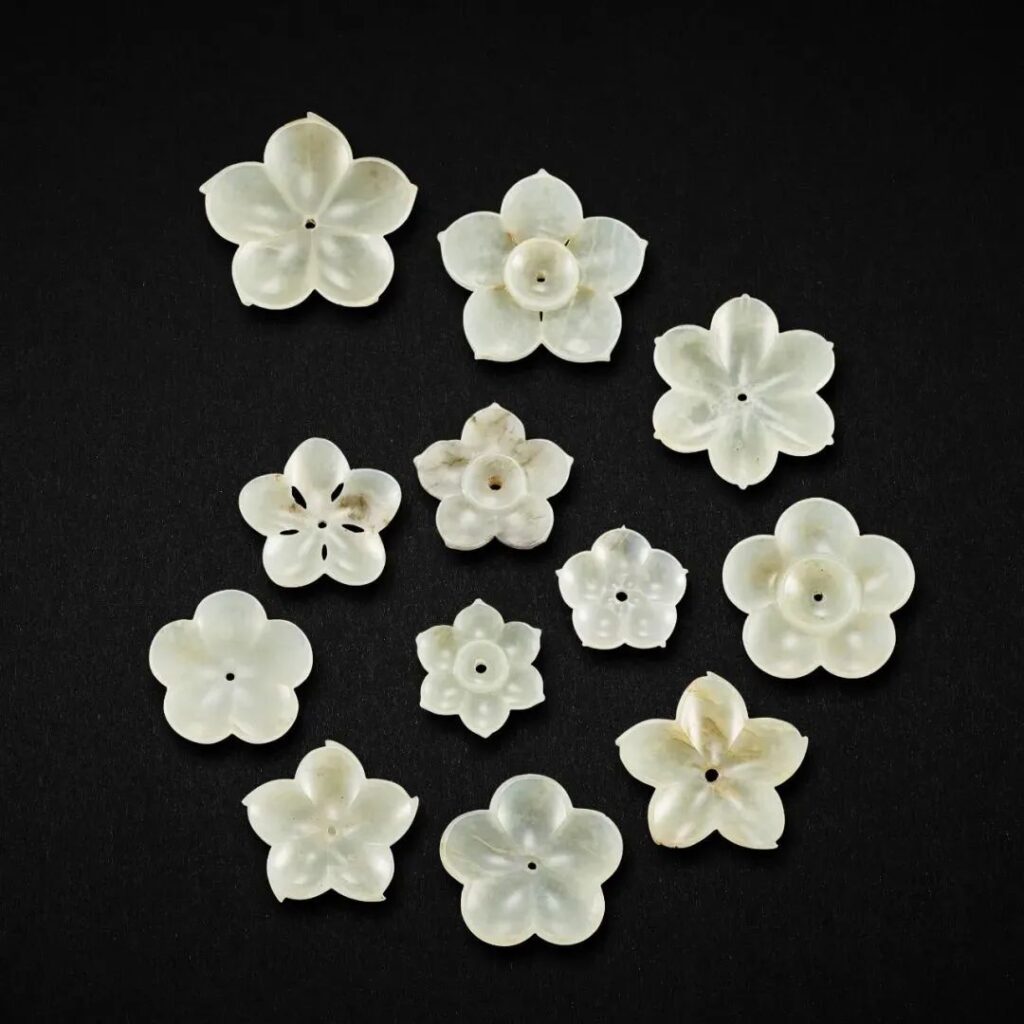
Additionally, those unique designs by Western jewelry designers are worth considering. After all, their jade jewelry is actually responsible for being “beautiful and versatile”.
They’re convenient to change daily, with minimalist designs that better match current wardrobes, while personalized designs are exaggerated, eye-catching, and strongly styled. Our New Chinese Style emphasizes not only “Chinese style” but also needs some innovation, right? Breaking conventional designs is really worth considering!
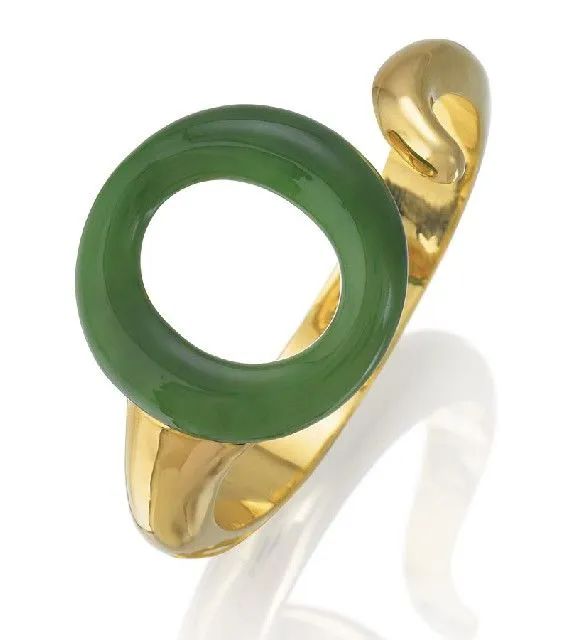
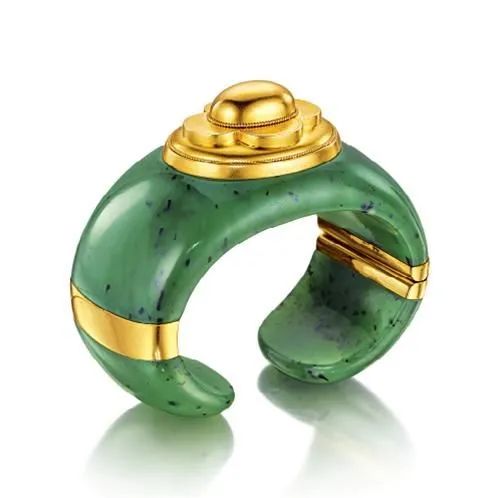
When it comes to carved jade loved by both Easterners and Westerners, there are many approaches, but the two sides’ practices can be said to be vastly different, fully reflecting cultural differences and aesthetic distinctions. Overall, Easterners prefer rounder carved jade in jewelry designs, most commonly seen in designs like “Fu beans”, “Peace locks”, and “No worries tablets”, which have meaning but abstract shapes.

Westerners, on the other hand, prefer to use jade with more complex carved patterns in jewelry design. They believe that the more intricate the carving, the more exotic it is. This actually makes sense because many patterns come from traditional cultures, even evolving from ancient totems, serving as condensed cultural visual symbols. Applying them to jewelry naturally brings a rich exotic flavor.
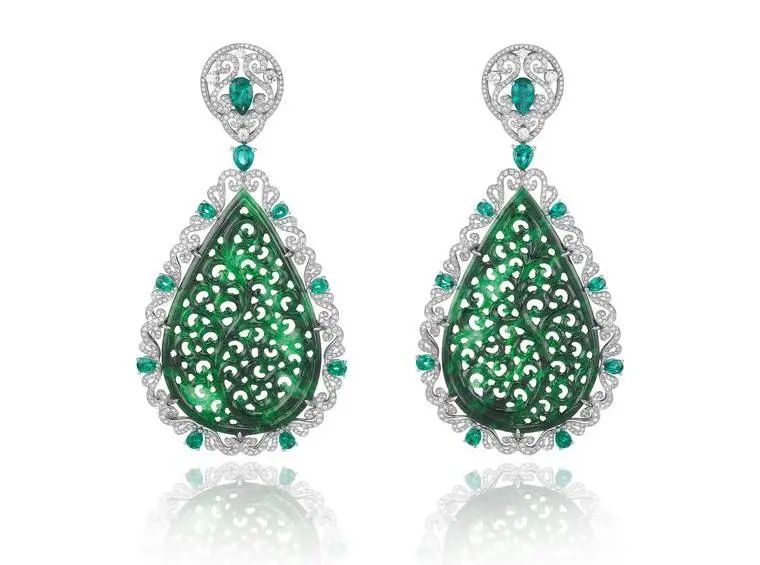

Circa 1930
We Chinese prefer to use carved jade with simpler shapes in jewelry. On one hand, this is because our jade carving techniques have long since reached the pinnacle, with jade carving as a separate art category. More importantly, gem-grade jade emphasizes the rarity of the material.
Chinese believe that “beautiful jade needs no carving”. A piece of top-grade jadeite is extremely rare, and often, shape-following carving is chosen to let you appreciate its beauty intuitively.

Sotheby’s auction
Moreover, jadeite jewelry needs to showcase its special “water content”, so most are designed with curved surfaces. This allows better appreciation of its transparency. Top-grade jadeite often resembles a pool of clear water, without cracks or impurities, with a soft glass-like luster.

Heidi Horten collection
Even for jewelry made from other soft jades, such as Hetian jade, the carved shapes in jewelry are mostly rounded lines with auspicious meanings. This is because soft jade is meant to be worn close to the body and played with regularly. After all, the ancients believed that jade could balance yin and yang energies, and the closer it was to the human body, the more it could cultivate one’s character.
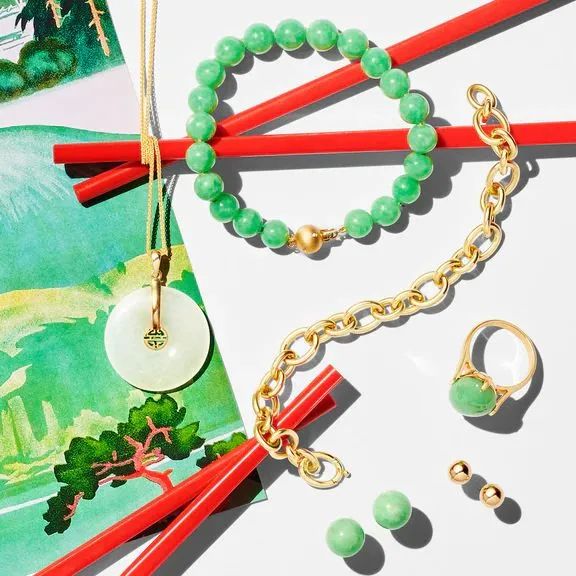
For example, the “Fu bean” has an undulating curved surface design, looking like a small flat bean. It symbolizes having many children and blessings, with wishes for a bountiful harvest and wealth attraction.
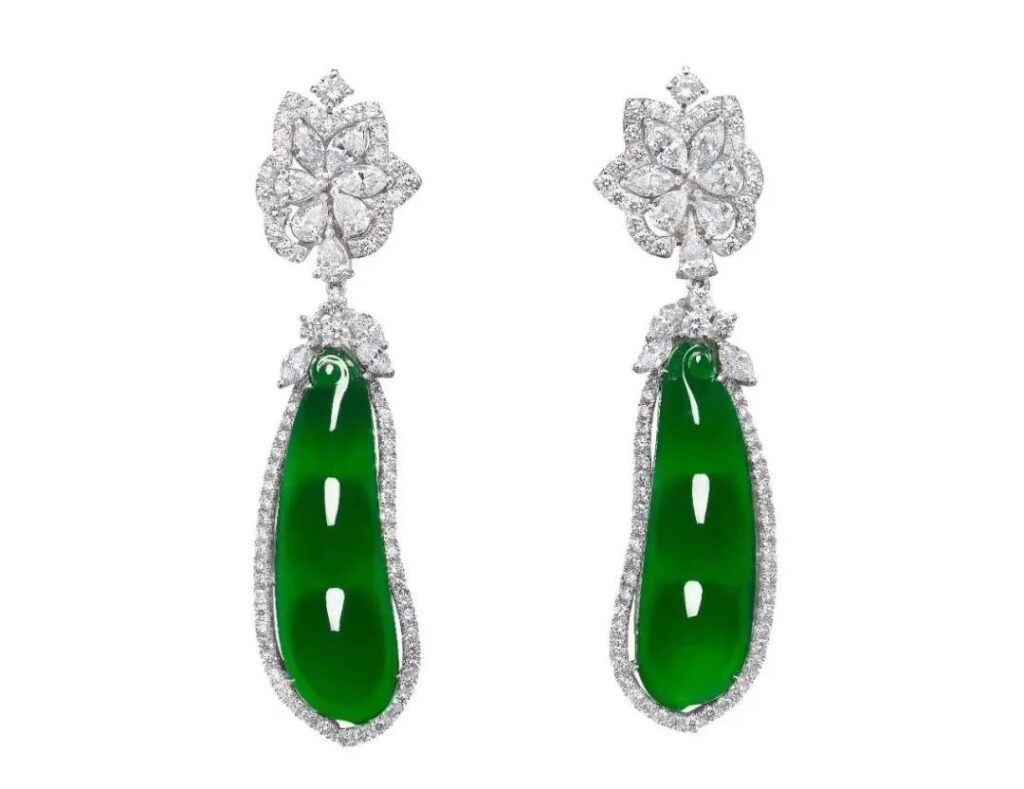
Heidi Horten collection
Then there’s the gourd, representing “fortune and prosperity”. Its shape is also round and plump, easily highlighting the jadeite’s water content and glass-like luster, making it one of the most common carved styles in jadeite jewelry.
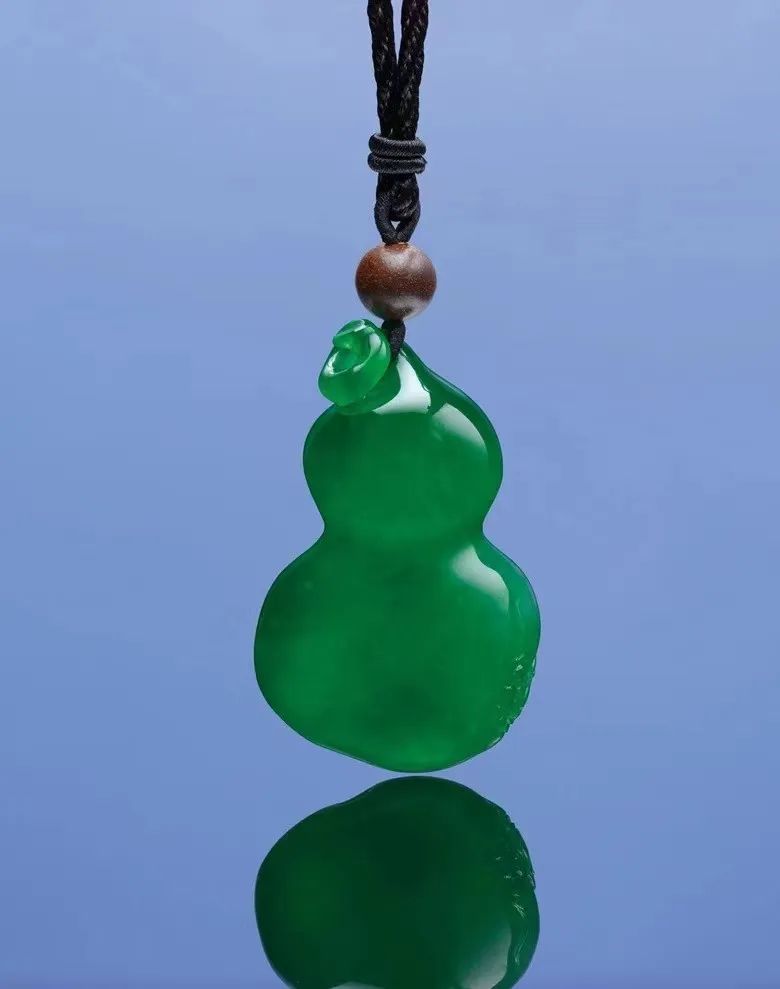
The “Peace lock” is our most classic traditional amulet. It’s circular with a hole in the center, overall curved, mimicking the shape of a coin. The ancients believed that “money can communicate with spirits”, so it could ward off evil and protect peace.
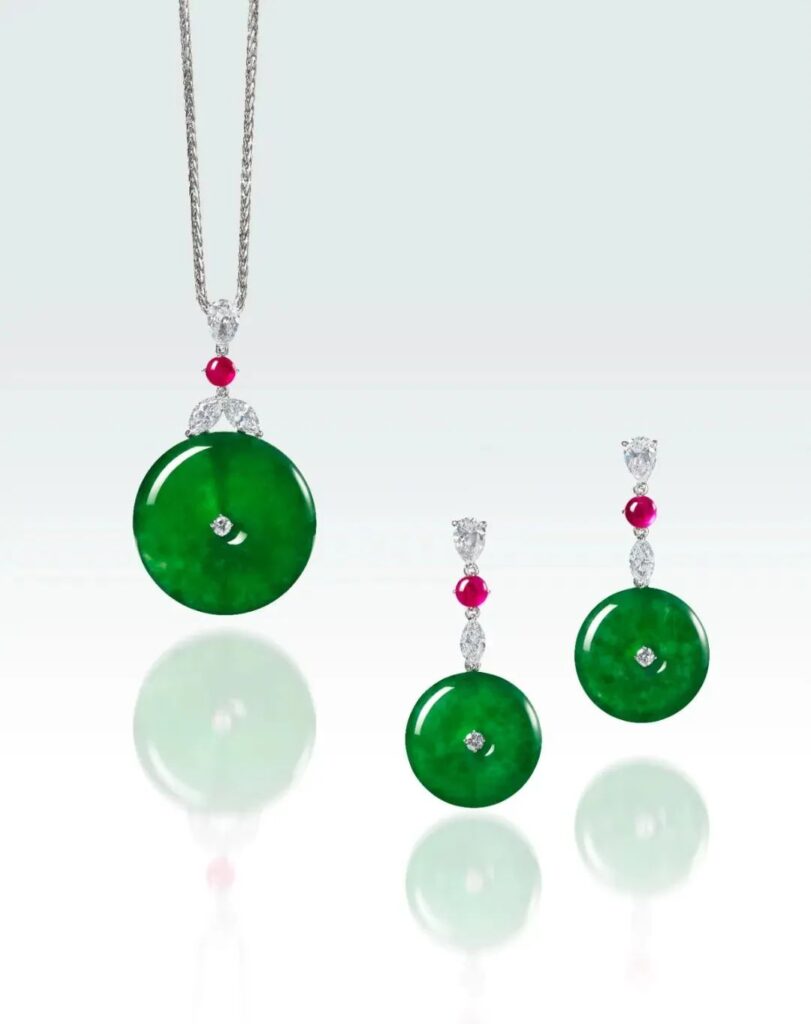
There’s another style that’s similar but rarer called the “linked rings”. It’s carved from a single piece of raw stone by highly skilled jade carvers, creating two interconnected rings. This represents continuous blessings and endless vitality.
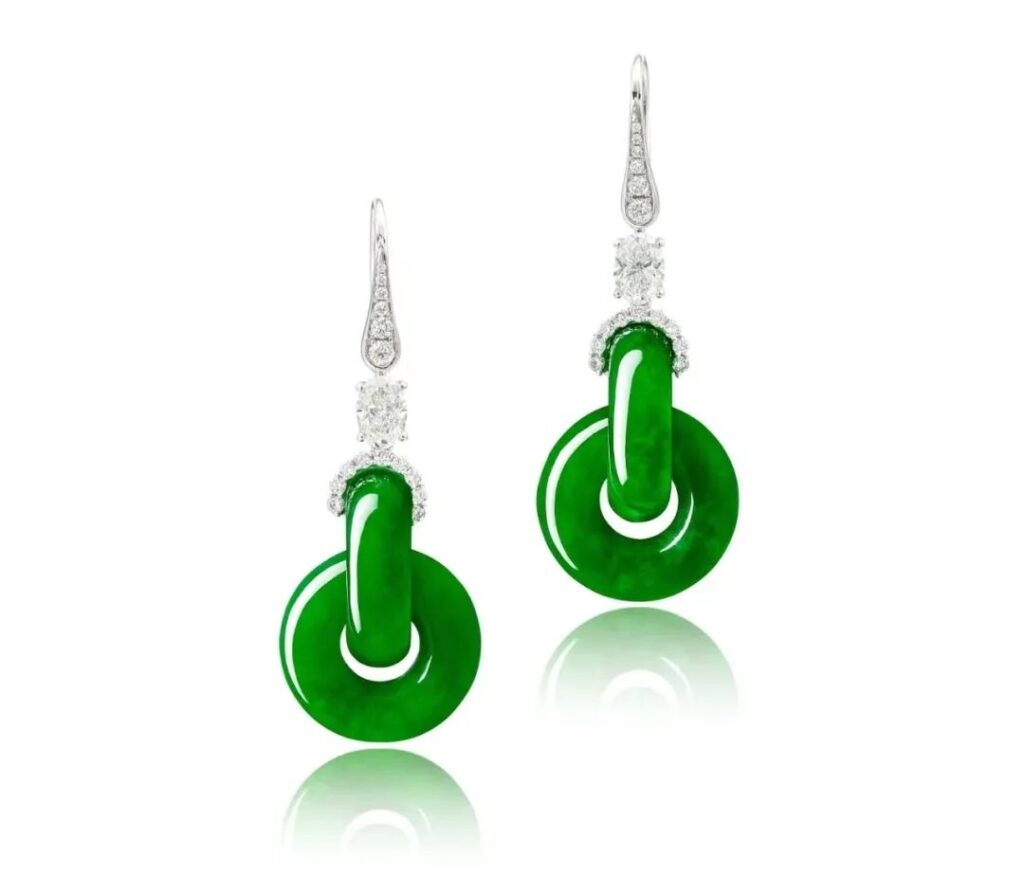
Then there’s the “No worries tablet”. It has nothing on it because the entire jade tablet has no carved decorations, hence called “No worries”, symbolizing “peace and no troubles”. So only the exterior, like the top or sides, might have some carved decorations. Of course, this design also has high requirements for the jade – only fine, smooth jade without impurities qualifies to be made into a “No worries tablet”.
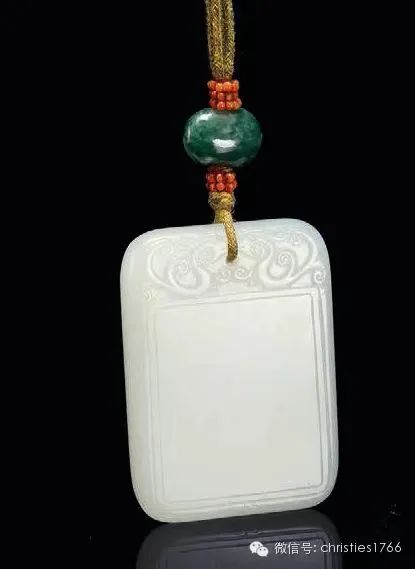
Western jewelry designers have an even deeper love for carved jade. In the early days of jade entering the West, directly inlaying various carved jades into jewelry was the “mainstream” practice, with Cartier and Lacloche Frères as the leaders. Bracelets, necklaces, and brooches all chose intricately carved jade, paired with exquisite craftsmanship and mainstream Western gemstones, creating a strong contrast.
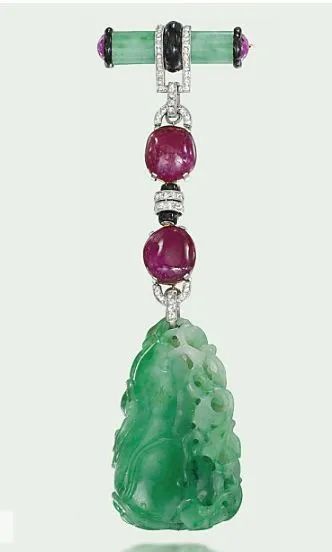
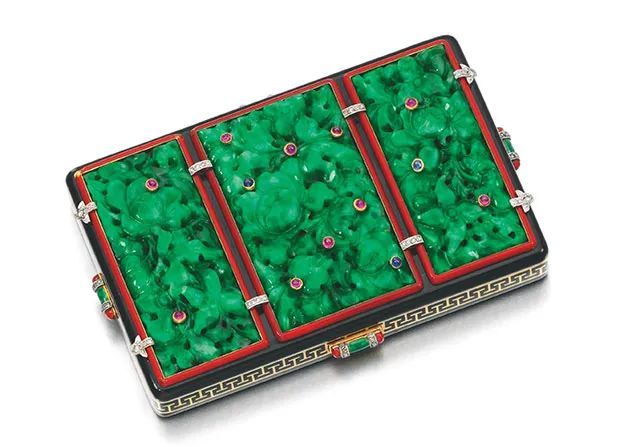
During the Retro Style period, jewelry designers became bolder. Represented by David Webb and Verdura, they chose to make exaggerated, large-sized jade carvings into jewelry, or even carved entire pieces of jade into jewelry, emphasizing unique style and unforgettable designs. Many of these oversized designs are quite challenging to wear, requiring a strong presence to pull them off.

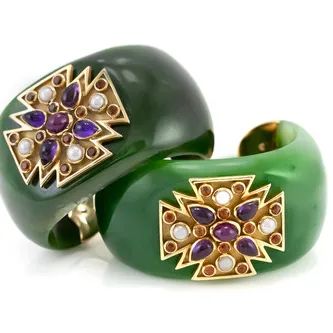
In today’s era of multicultural diversity, jewelry designers have fallen in love with jadeite flower plaques. They particularly enjoy directly setting these as earrings, which may be the top choice for Chinese-style jewelry that can be worn both on the red carpet and for street photography, attracting numerous celebrity icons.
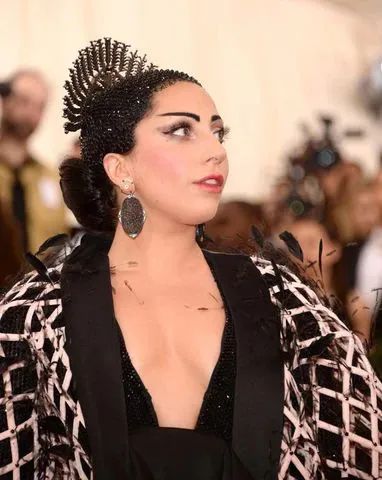
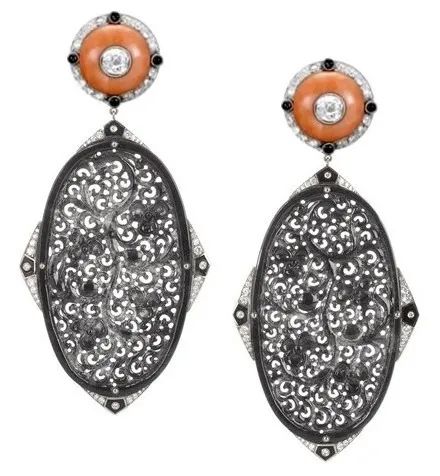

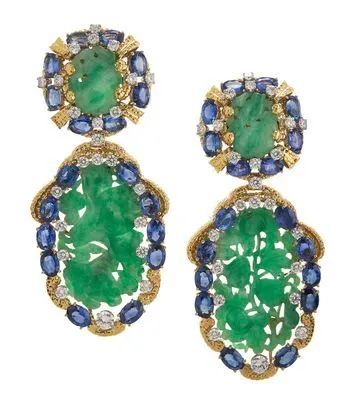
The allure of these intricately carved jadeite flower plaques is irresistible, even royalty couldn’t resist the trend. Sophie, Countess of Wessex, owns a carved flower plaque necklace that she pairs with both formal occasions and daily looks.
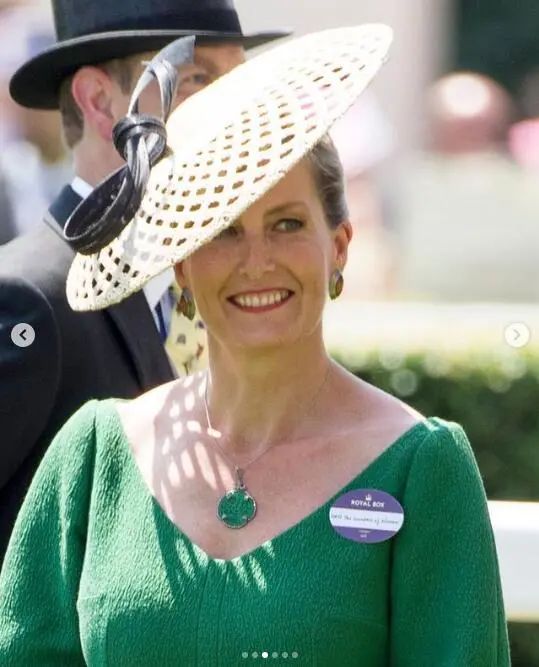
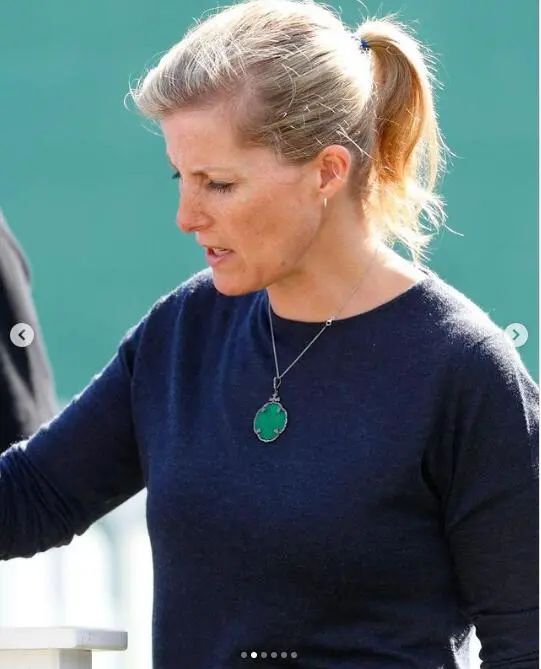
After seeing so many jade jewelry pieces, how should girls embracing the New Chinese Style choose? Bazhu Jie has specially selected two celebrities as examples for you. Yang Mi can be considered a leader in the New Chinese Style. She mostly chooses jadeite jewelry with relatively traditional pure Chinese designs.
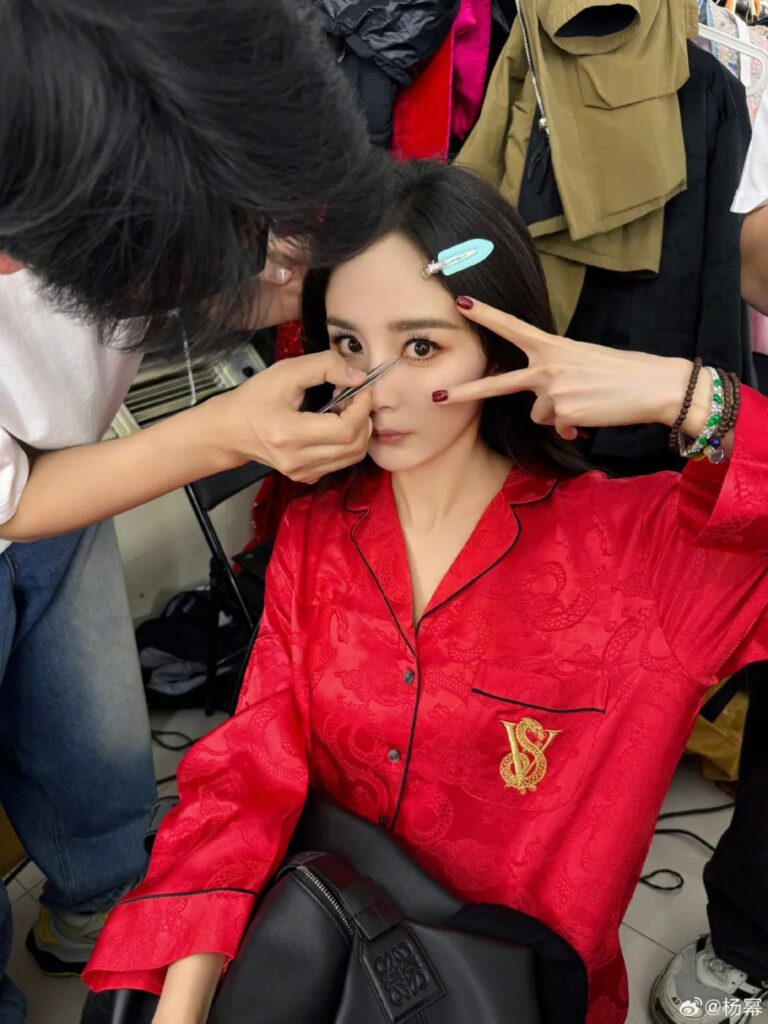
Her styling secret is minimalism + traditional pieces. For instance, she wears bead bracelets or cabochon jadeite bracelets often seen at auctions, naturally incorporating a New Chinese Style flavor into daily wear. She pays great attention to color contrast in her outfits. For example, she might pair an all-black ensemble with multi-layered colorless jadeite bracelets, creating a back-to-basics feel with minimalist styling.

When attending fashion shows, she still opts for an all-black look, wearing only a single cabochon jadeite ring. This greatly highlights the “green” of the jadeite. She cleverly paints her nails in a matching shade to echo this touch of green. It’s worth noting that when you look at her photos, you almost completely overlook the Loewe bracelet and earrings she’s wearing, which have quite a heavy metal style. This demonstrates the powerful presence of jadeite.
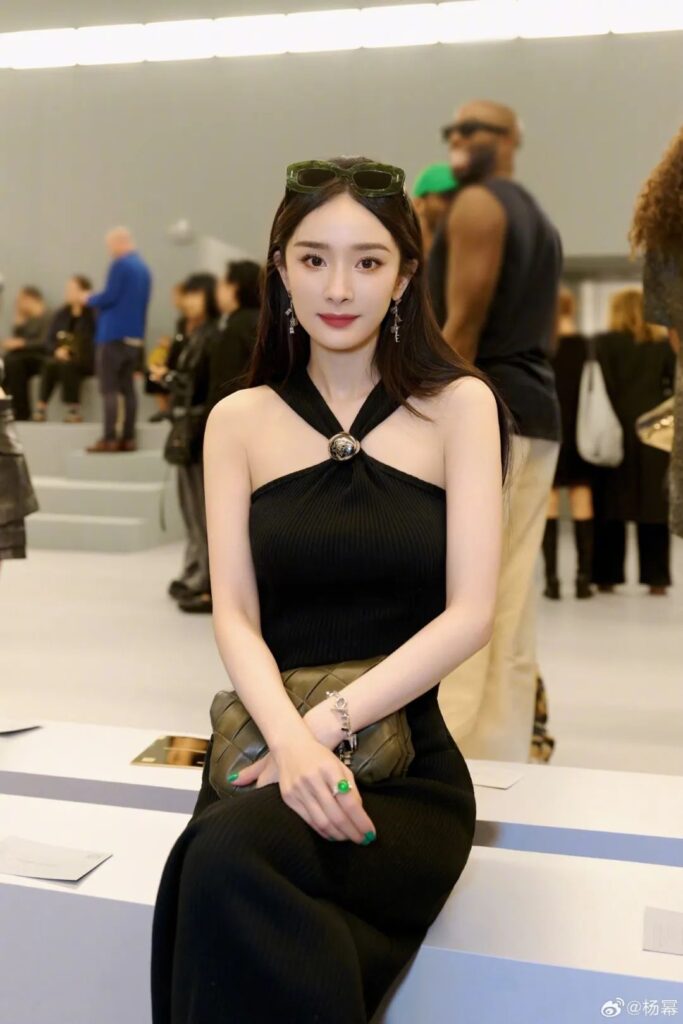
When Yang Mi creates street looks, she also chooses more youthful jadeite designs to create a fashionable New Chinese Style. For example, a bracelet set with just one cabochon jadeite, or a single jadeite bead hanging from a short pearl necklace, are both relatively relaxed ways to wear jadeite.
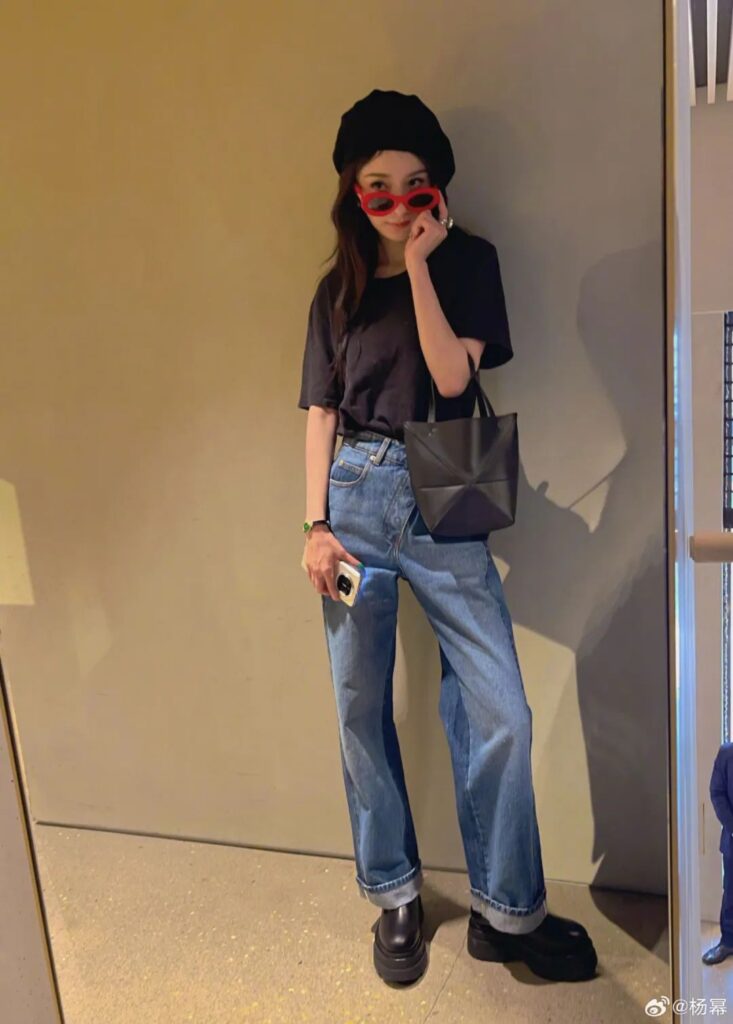

Only when truly wearing Chinese-style clothing does Yang Mi choose particularly traditional jadeite designs, emphasizing elegance and solemnity, maintaining a consistent style.
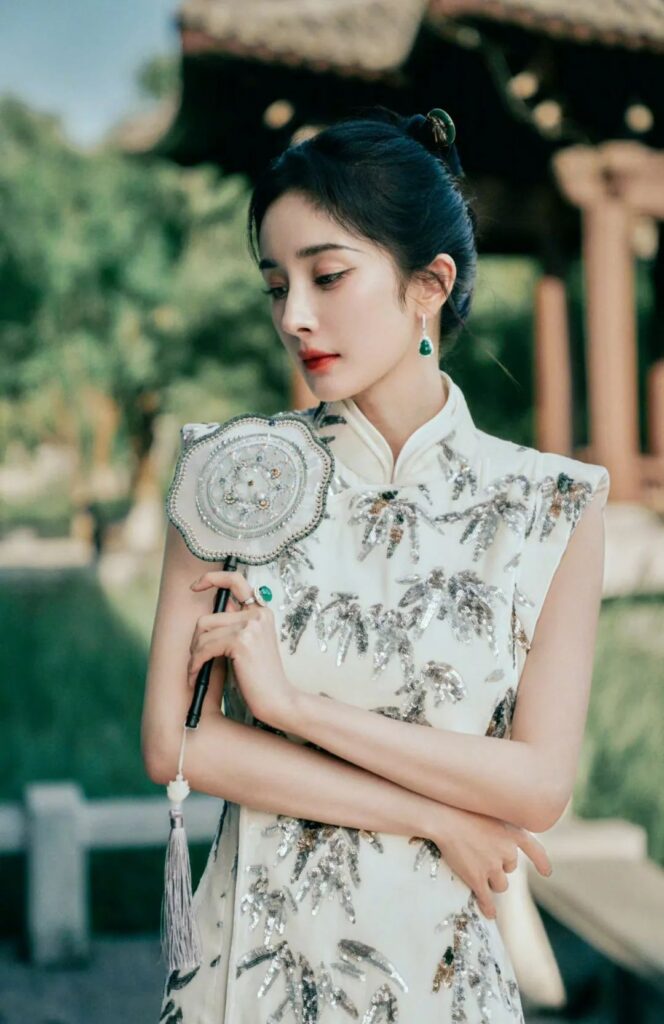
Therefore, regardless of how Western jade designs break conventions or how Chinese jade designs emphasize material quality, girls embracing the New Chinese Style can confidently choose with their eyes closed and never go wrong! Of course, collectors with substantial resources can also go all in!
East Meets West: The Jade Dilemma for Modern Chinese Fashionistas
Tweet
